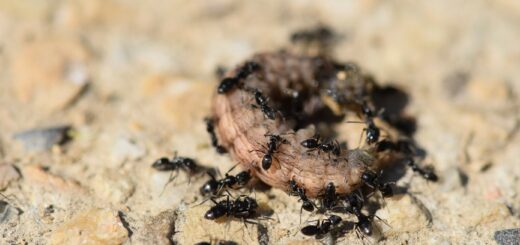Obstacle size affects clearing foraging trails in leaf-cutting ants
In the recently published article “When and how obstacle size and the number of foragers affect clearing a foraging trail in leaf-cutting ants” in Insectes Sociaux, Andrea Marina Alma, Alejandro G. Farji-Brener, and Luciana Elizalde revealed that leaf-cutting ants do not have workers that exclusive clearing foraging trails, but they rather also forage. The cost of an obstacle created increased with its size and the ant flux, which also influenced removal probability. Here, Andrea Marina Alma shares some pictures and videos.
A Photoblog contribution compiled by Andrea Marina Alma
Sample site located in Reserva Ecológica de Guapiaçu—REGUA, Brazil. (© Andrea Marina Alma)
Foraging trail of Atta sexdens. Their trails are ubiquitous, usually exceed 100 m of length and kept free of debris like litter, which frequently falls onto them and blocks the ant traffic. (© Andrea Marina Alma)
Leaf-cutting ants (Atta sexdens) collectively remove an obstacle of 10 cm2 by cooperative transport. The ant flux was 118 ants per min. At the end of the video, two workers cooperatively transport the obstacle away from the trail. During collective removal, both individuals change the directions by pulling or pushing.
Partitioned collective removal of an obstacle. Leaf-cutting ants (Atta
Collective removal of an obstacle. Leaf-cutting ant (Atta
Individual removal of an obstacle. Leaf-cutting ants (Atta sexdens) individually removing an obstacle of 10 cm2. The ant flux was 54 ants per min. One worker drags the obstacle and picks it up with the mandible carrying it over its head. Foraging ants walk along the edge of the obstacles while some ants even cross it directly.
Individual removal of an obstacle. Leaf-cutting ant (Atta








Recent Comments